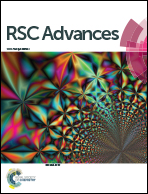Manipulating carriers' spin polarization in the Heusler alloy Mn2CoAl
Abstract
We report that complete spin polarization and controllable spin polarization of carriers can be simultaneously realized in the Heusler alloy Mn2CoAl simply by applying external pressures based on first-principles studies. At ambient conditions, Mn2CoAl is a ferromagnetic spin-gapless semiconductor (SGS) with complete spin polarization. Under hydrostatic pressures up to 40 GPa, Mn2CoAl undergoes a series of electronic transitions from SGS with spin-up as a conducting channel to a ferromagnetic semiconductor and then to SGS with spin-down as a conducting channel and finally to a half metal, during which the magnetic moment remains as 2 μB. Such rich electronic transitions are attributed to different responses of the spin-up and spin-down electrons under pressure. This work highlights a desirable way to control the carrier's spin polarization and provides a new insight into the electron behavior in Mn2CoAl related Heusler alloys under pressure.


 Please wait while we load your content...
Please wait while we load your content...